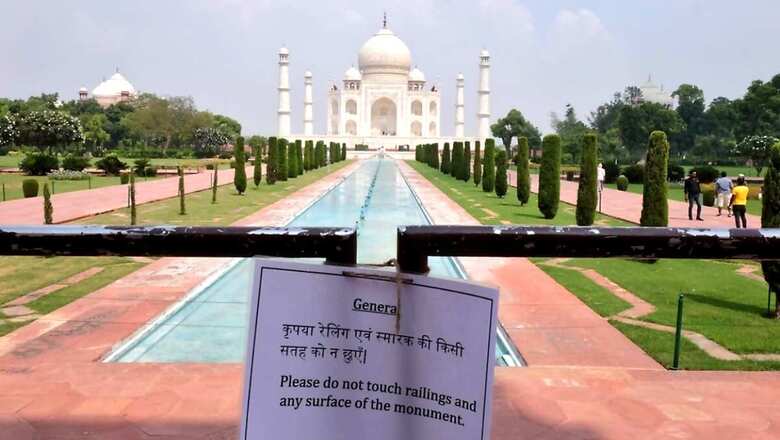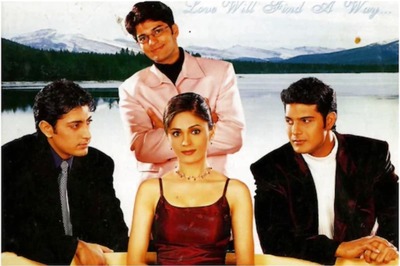
views
Imagine taking a walk through a maze of bylanes dating back to the Victorian era of Kolkata with its eclectic mix of art amid dilapidated ruins of buildings that once held pride of place on one lazy Sunday evening. In the next hour, traverse through the many interior pathways in Madras’s history infused Georgetown, exploring days of the yore. Sounds difficult to do in a day?
Not really. Cut to 2020 and the era of virtual heritage tours.
The pandemic has widely altered traveling across countries and even within one for everyone this year. As the lockdown pushed everyone inside their homes, people resorted to the comforts of virtual reality to take in the sights as they choose safety over anything.
Although virtual tours have been in existence well before the pandemic, the dire conditions of 2020 forced many others to consider doing the same. And a particular kind of virtual tour, the one offerings a good look into the heritage, art, and culture of a city or its people is gaining a lot of traction amid the pandemic all over again.
So, what exactly makes these heritage tours tick? Ashmitha Athreya, the head of Operations at Madras Inherited, believes it is because of a renewed interest the city’s inhabitants are showing towards their culture and lost heritage. Madras Inherited is a team of researchers, academicians devoted to bringing alive the history of the city and the intricacies of its culture, the people, and even of a particular place.
“Many of these people who take these tours have been living in the city for decades but never knew of the rich slice of history they were probably passing by every day. But now, many are newly discovering a love for their own city’s history own city, perhaps due to all the time they had during the lockdown. We have been getting a huge response from not only people living in Chennai, but those from outside the city or even country, wanting to explore our city. ”
The tours are mostly timed for about an hour or two, depending upon the subjects and time required to delve well enough into the virtual walk.
A quick search on the internet takes one to numerous virtual tour organisations’ websites from cities across India. Delhi, Kolkata, Mumbai, Bhopal, all of them are now catering to the new shift in tourism.
Kolkata’s Immersive Trails, formerly named as the Heritage Walk Calcutta is another such heritage walk company that takes people on extensive explorations through the arterial roads and lanes of the city. A virtual tour of such detailing can be difficult to achieve online, but Immersive Trail’s Anmol Grover, who is a consulting architect with the company feels that virtual trip also provides tourists with certain takeaways. Setting up virtual tours was already on the cards and the pandemic may have just jumpstarted it, Anmol says.
“We started the virtual tours in July and we have had more than 1100 participants so far. Yes, it does not feel as personalized as it does with a physical walk, but we have tried to replicate the experience as much as possible. Our walk leader is there physically present, and they shoot beforehand and while on the zoom call, we explain each and every single aspect of the trail we are covering and also take questions at the end of each stop,” she adds.
So, what’s the kind of demographic that usually signs up for these heritage tours? Both Madras Inherited and Immersive Trails have seen a good mix of people from over 25s and those above 40-50s.
Divya Sinha, who took a tour of the Victorian Calcutta Walk, says she was thoroughly impressed by the details the virtual walk offered. “Although it is not exactly the most favourite way to explore these subjects and especially since Kolkata as a city has so much to offer in terms of heritage, I will still take this because I am not ready to compromise on safety as long as there is a risk of a virus.”
Anmol agrees. “Many youngsters who earlier enjoyed our physical walks are now coming back on the virtual ones with their parents as they earlier could not attend probably due to mobility issues and especially since the virus started spreading, heath concern is everyone’s top priority. “
This is not just for history-laced heritage city tours. Virtual reality tours have become a regular feature in many recent events. The recently concluded 21st Hornbill festival of Nagaland was shifted to a virtual platform due to the coronavirus threat. The organizers aired the festival’s events on three national and regional audiovisual news channels.
The Hornbill festival every year portrays the diverse and rich Naga ethnicity through various forms of folk dances, music, local cuisine, handicrafts, art, craft workshops, and other experiences of the Nagas. Museums, heritage sites protected by UNESCO and monuments have all arranged to give a virtual sneak peek to people sitting in their living rooms.
So what is the future of virtual tours? With a vaccine still some months away from the general public, most of these organisations are planning to make the virtual tours a permanent feature. Immersive Trails is also planning to soon launch an application that will make it easier for heritage enthusiasts to check-in. A recorded audio file that will explain a particular trail in fine details while one explores the place on their own.
So, even if takes a few more months of 2021 for things to normalize, the virtual tours are here not stopping anytime and will be here to give an insightful and all-round experience to thrill-seekers. As Madras Inherited’s Ashmitha says, when it comes to old buildings and heritage, time is of the essence!
Read all the Latest News, Breaking News and Coronavirus News here



















Comments
0 comment